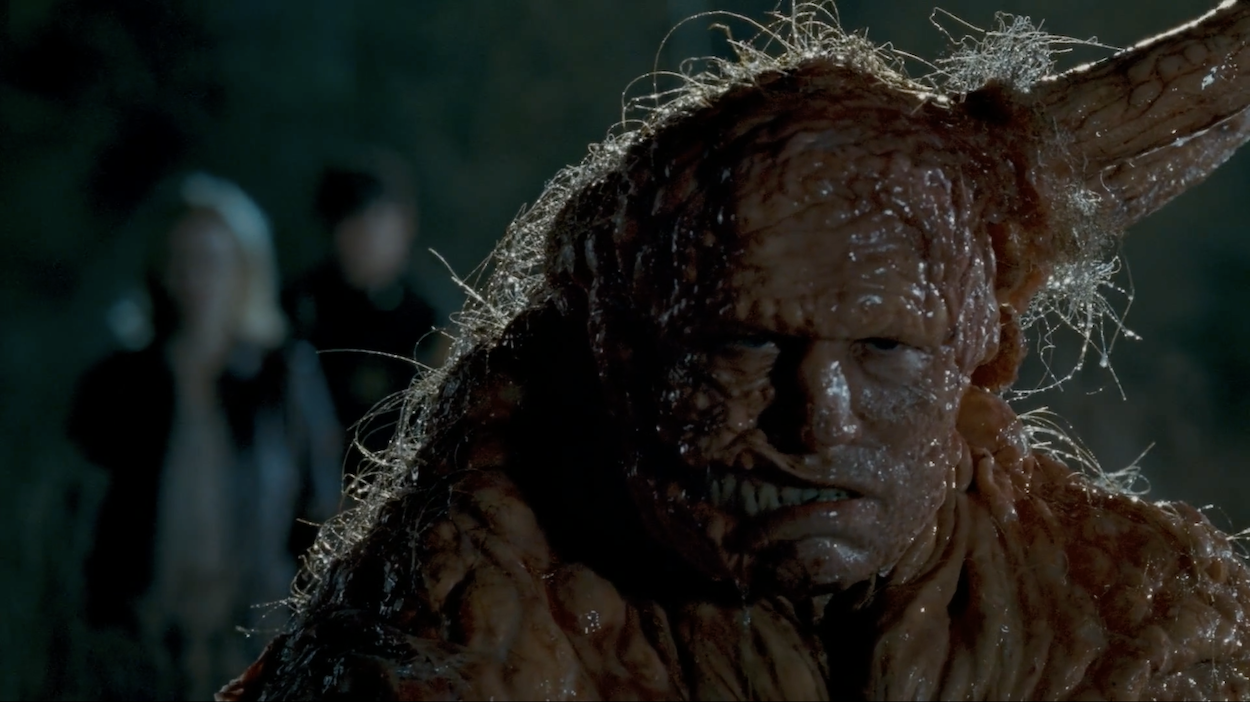SLITHER (2006)
Before THE SUICIDE SQUAD (note the addition of “The” to distinguish it from its predecessor), the hard-R soft reboot of DC’s antiheroes, before GUARDIANS OF THE GALAXY VOLUMES I-II, Marvel’s mismatched misfits and inadvertent heroes, and even before SUPER, an underappreciated, under-seen deconstruction of the superhero genre, filmmaker James Gunn, hot off the commercial and critical success of writing Zack Snyder’s DAWN OF THE DEAD remake in 2004, was given the resources to direct his own script for SLITHER. A splatter-filled sci-fi/horror comedy, SLITHER failed to recoup its modest costs and left most critics at the time either seriously perplexed at SLITHER’s blacker-than-black humor or repulsed by its body horror-inflected excesses; all of them, it should be added, gloriously, dementedly depicted via CGI-free practical effects of the first order.
By all rights, Gunn’s career as a filmmaker could have ended there or three years later when his follow-up, SUPER, also left box-office disappointment in its wake, but Kevin Feige, Marvel’s president and uber-producer, saw something unique in Gunn and his pre-Marvel career, specifically Gunn’s sympathetic, empathetic approach to pariahs, outsiders, and outcasts, that suggested Gunn could adapt his approach to character, character development, and character interaction to the GUARDIANS OF THE GALAXY. The rest, unsurprisingly, was (and continues to be) MCU history.
Initially, SLITHER centers on Grant Grant (Michael Rooker), the wealthiest resident of Wheelsy, a small town in South Carolina. Married to Starla (Elizabeth Banks), a much younger woman, Grant isn’t a standard-issue, one-dimensional, hissable villain typical of the genre, receiving karmic retribution for abusive or self-entitled behavior in the form of an alien parasite that picks him as its host. Under Gunn’s guidance, he’s a sympathetic, if tragically flawed, character, defined less by his wealth, status, or his willingness to use one or both to acquire whatever he wants at a particular moment than his partially unrequited love for his wife, Starla.
Like Grant, Starla doesn’t fit the villain role either. She may be married to Grant out of loyalty and the financial security he offers.
She may have even have somewhat requited feelings for the good-hearted, if not particularly bright, small-town police chief, Bill Pardy (a post-Buffy/pre-Castle Nathan Fillion), but out of a sense of obligation to Grant, she doesn’t act on those feelings towards Pardy.
It’s a status quo unlikely to change until Grant exits the scene or some other possibility—like the arrival of an alien parasite hiding inside a meteorite.
Grant becomes not just host to a voracious alien parasite bent on world domination (shades of THE SUICIDE SQUAD’s super-sized villain, Starro), but also a super-spreader of sorts: ejecting slimy, goo-drenched slugs that attack the town’s unsuspecting inhabitants and transforming them into virtual slaves to the alien’s hive mind. It’s here (and there) where the comparisons, some unfavorable, to Fred Dekker’s NIGHT OF THE CREEPS come into play. At best, though, they’re superficial, sharing a single concept (alien slugs rendering people in zombies in order to propagate the speices) and not much else. Gunn’s influences are far deeper and broader, ranging from INVADERS FROM MARS (hive mind), THE BLOB (a malevolent alien life-form hitching a ride on a meteorite), and on through SHIVERS (slug-like, mind-controlling creatures) and THE BROOD (birth-related horror of the body kind), the last two made by horror auteur David Cronenberg early in his filmmaking career.
SLITHER, though, is far more than a simple compendium of horror references or genre influences. With its characters first, rapidly metastasizing story second, and gore-filled set pieces third (all wrapped in Gunn’s grimly dark, scattershot sense of humor), SLITHER deserves a second or even third look by horror fans who first rejected it 15 years ago, not just as a curio in Gunn’s career as a high-profile filmmaker with a recognizable name brand, but as a singular, standalone sci-fi/horror comedy with few, if any, equals. A genre mash-up that deftly mixes keen insights into human behavior, the complexities of romantic and/or monogamous relationships, and small-minded, small-town dynamics with some of the more memorable gross-out effects of that decade (or really any other decade).






